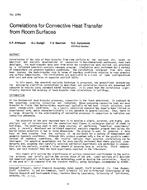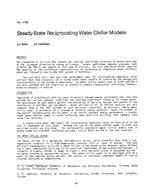-
-
Available Formats
- Options
- Availability
- Priced From ( in USD )
-
Available Formats
-
- Immediate download
- $16.00
- Add to Cart
Customers Who Bought This Also Bought
-

DC-2764 -- Correlations for Convective Heat Transfer from...
Priced From $16.00 -

DC-2775 -- Utilization of Condenser Heat for Desiccant De...
Priced From $16.00 -

DC-2760 -- An Economic Analysis Code for Selecting Buildi...
Priced From $16.00 -

DC-2786 -- Steady-State Reciprocating Water Chiller Models
Priced From $16.00
About This Item
Full Description
An electrically heated manikin was used to study the effects of garment design and fabric type on the thermal insulation (clo) values of garments and ensembles. Various designs for shirts, skirts, trousers, suit jackets, and other garments were constructed using three fabrics of 6.1, 9.5, and 14.7 oz/yd2 (205.8, 321.8, and 498.1g/m2) cotton twill. Selected designs were also constructed of other fabrics. Clothing weight, clothing area factor, and the body surface area covered by clothing were measured for each garment and ensemble. The results indicated that fabric insulation affects clothing insulation but not in the same degree for all designs. The design variations which altered the amount of body surface area covered and the looseness or tightness of fit produced the major changes in clothing insulation. Regression analysis indicated that the amount of body surface area covered by a garment was a good predictor of insulation, but the relationship was not strong for ensembles. Weight alone was not a good predictor of clothing insulation. The ASHRAE formula for estimating the Icl value for an ensemble from the sum of the garment Icl values was a relatively good predictor of ensemble insulation. However, the ASHRAE list of garment clo values needs to be revised to include more design and fabric variations.





